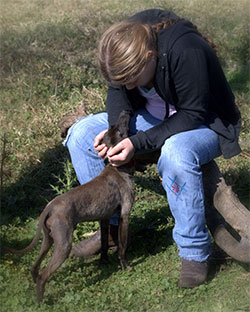Bringing a new puppy home is an event that requires a bit of planning. Imagine that you are about to bring a two-year-old child into your house. He’ll be curious, active, perhaps a bit shy and overwhelmed by noise and action, and easily overtired. Are you ready for the challenges that a new puppy brings into your home? Here are some things to be aware of, and some tips to help you prepare.
Your Puppy Is Just a Baby
Young puppies are easily overwhelmed. Here are some tips for those first few days:
- Keep your puppy’s environment as calm as possible. Excited kids, other pets and household chaos can overwhelm your little puppy and cause anxiety.
- Recognize the signs of naptime. Puppies, like babies, need frequent naps. Learn to recognize the signs that your puppy is becoming overtired, and whisk him into a quiet room (or his crate) for a break.
- Your puppy’s appetite might be affected by the transition. Don’t worry too much if he doesn’t eat a lot the first day. If he struggles for longer than a few days, see your veterinarian.
Keep Puppy Safe
You’ll want to puppy-proof your house, both to protect your pup and to protect your belongings!
- Install baby gates at the top of stairs. Curious puppies can take a tumble down stairs, with bad results.
- Get on your hands and knees! Crawl around and look at your home from a puppy’s viewpoint. See any interesting dangling cords or tablecloths? Secure them now, or risk Puppy pulling something over on top of himself.
- Educate kids in advance. Teach children how to treat your puppy before he arrives. No ear pulling, tail pulling or hitting allowed! Show kids the right way to hold the puppy so that he feels secure and is safe.
- Remove any poisonous plants from your home, or place them high enough that your puppy could never reach them.
- Be aware of choking hazards. Some dog treats are not meant for small puppies. Small toys can be swallowed.
The First Night
If you’ve adopted a very young puppy, he may have a difficult time being away from his mom and litter mates. Use the tips to keep your puppy from crying all night.
- Take a small blanket or towel to his birth home a few days before picking him up. Ask the owners to put it where mom sleeps, so it will smell like her. Then tuck it into your puppy’s new bed at home, where the smell will be reassuring.
- Plan to have your puppy sleep near you, at least for the first few nights. Place his crate or bed near yours.
- If your puppy cries or whines, give him gentle reassurance, but be firm. The middle of the night is not the time for a game of tug, unless you want to form some very bad habits.
- Consider a “heartbeat” toy. Your local pet store carries a variety of stuffed puppy toys that sound like a mother dog’s heartbeat.



